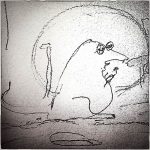Tag: British
-
Gilpin’s Theory of the Picturesque
Gilpin’s Essay on Prints (1768) defined picturesque as “a term expressive of that peculiar kind of beauty, which is agreeable in a picture” (p. xii). Gilpin began to expound his “principles of picturesque beauty”, based largely on his knowledge of landscape painting. During the late 1760s and 1770s Gilpin travelled extensively in the summer holidays…
-
Roger Fenton
Roger Fenton (28 March 1819 – 8 August 1869) was a pioneering British photographer, one of the first war photographers. Roger Fenton was born in Crimble Hall, then within the parish of Bury, Lancashire, on 28 March 1819. His grandfather was a wealthy cotton manufacturer and banker, his father a banker and Member of Parliament.…
-
Fay Godwin
Fay Godwin (17 February 1931 – 27 May 2005) was a British photographer known for her black-and-white landscapes of the British countryside and coast. Official website British Library archive: including approximately 11,000 exhibition prints, the entire contents of her studio, and correspondence with some of her subjects. Google images detailed overview of her work from…
-
Peter Henry Emerson
As I stood admiring just before sunrise, the reed-tops bending under their beautiful crystal heads, rooks came flying from a wood near by, and a vast flock of peewits darkened the sky. As the yellow sun arose in frosty splendour mists began to rise on the river, and there followed a brief spell of magic…
-
Justin Partyka
website Summer Days in the Stour Valley Wander the path of a winding river and it will take you deeply into the experience of landscape. Through the summer days I walked the footpaths, fields, meadows and farm tracks of this bucolic river valley. The Stour Valley remains a timeless landscape that continues to be rooted…
-
Jo Spence
Jo Spence (1934–92) had a highly politicised approach to photography, creating photographs that run counter to the idealised imagery offered by advertising. Spence often worked collaboratively and sought alternative distribution models, laminating work for durability and renting out her photography to conferences, libraries, universities and public spaces to broaden its audience. She also documented her own struggles…
-
Simon Roberts
-
Richard Long
Long, in particular, has sought to distance his practice from the epic scale of works by Smithson and Michael Heizer. Long branded these kinds of works negatively as ‘capitalist art’, because of the way they absorbed the land and because of the financial resources necessary for their production (Andrews, 1999, p. 215). Long espoused a less interventionist approach to…
-
Martin Parr
Martin Parr (born 1952) trained in photography at Manchester Polytechnic. Described in the past as Margaret Thatcher’s favourite photographer, Parr caused a stir when he tried to join Magnum Photos. The issue was one of integrity. Photographers within Magnum’s ranks guarded their territory jealously and felt that the work that Parr offered was voyeuristic, titillating and meaningless. Parr…
